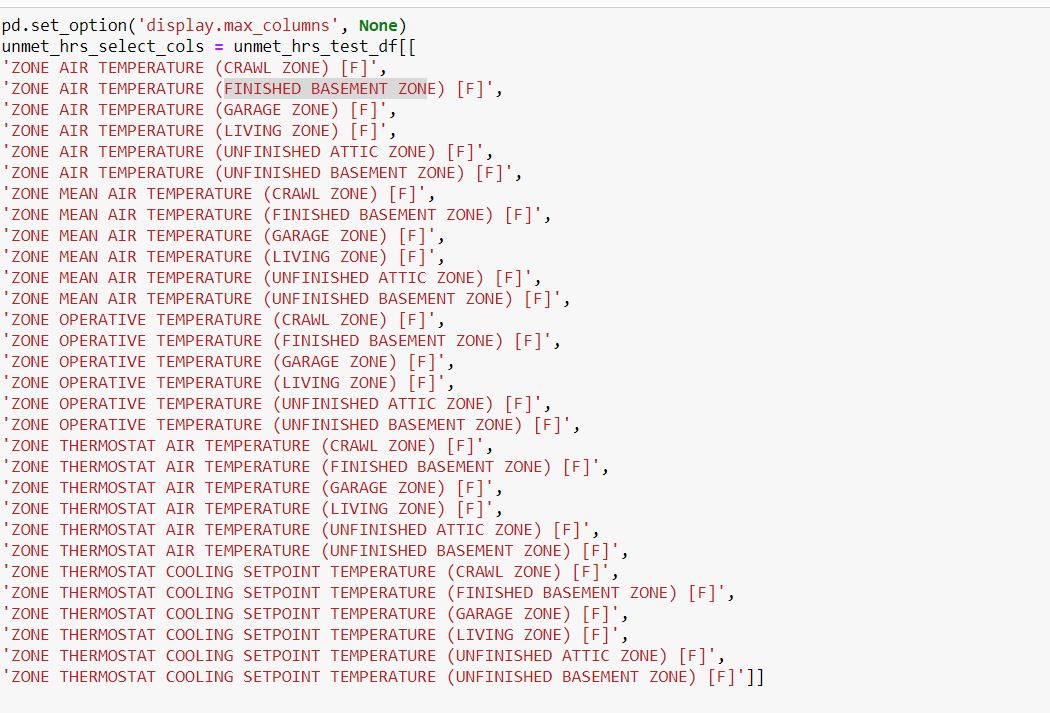Which fields are used in computing an unmet hour?
I know that an unmet hour is computed as 1 when the hourly setpoint and hourly zone temperature do not match up: I am trying to code my own unmet hours computation function to see why a few of my simulated buildings have ridiculously large unmet hours.
There are however multiple setpoint fields and zone temperature fields that can be compared:

Which fields do I compare (ie take the difference of) to figure out if something is considered an unmet hour?




